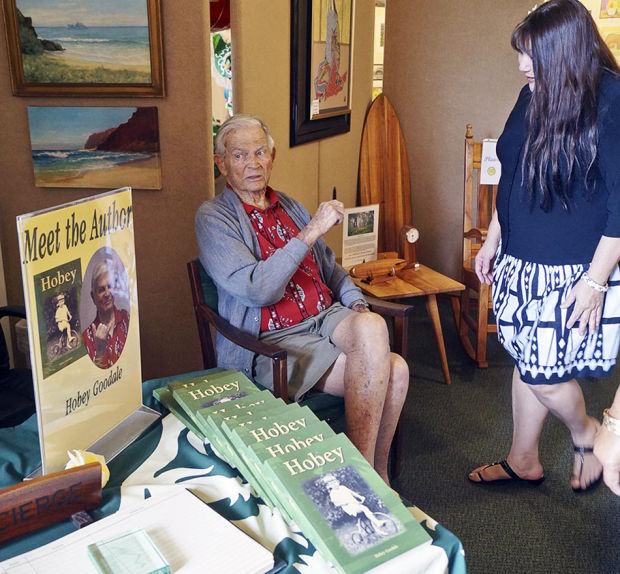LIHU‘E — The Japanese tradition of Girls’ Day will be celebrated on March 3, and the Kaua‘i Museum is already prepared for the annual tradition with a new display. “We just got a donation of a Girls’ Day display,” said
LIHU‘E — The Japanese tradition of Girls’ Day will be celebrated on March 3, and the Kaua‘i Museum is already prepared for the annual tradition with a new display.
“We just got a donation of a Girls’ Day display,” said Chris Faye, curator of the Kaua‘i Museum. “We have never had a Girls’ Day display, and on Tuesday, Arnette Lee of Hanapepe donated her set to the museum.”
Faye said the set is approximately 60 years old and depicts the ancient Imperial Court on a tiered stand draped with red cloth. The original set was given to Lee by her grandparents because she was their firstborn granddaughter.
“There is only one set,” Faye said. “Lee would take it out each Girls’ Day. But the last time she took it out was about four years ago so her granddaughter could enjoy it. It takes up a lot of space to store and so she said ‘I can enjoy it at the museum.’”
March 3, the third day of the third month, is Hina Matsuri, or the Doll Festival in Japan, where a family wishes good health and future happiness to girls. Colorful hina dolls, as depicted in the Imperial Court set up, are displayed while the entire family enjoys special foods for the occasion.
Hina Matsuri has its origin in the Heian Period from 794-1185 and the custom of nagashi-bina, a practice that when winter turns to spring, people wished on paper dolls, placing bad luck on their backs before floating them down the river. This was believed to keep away illness and provide good health.
During the early years of the Edo period, 1603 to 1868, the festival developed into a holiday for women from their hard work taking care of the family and wishing good luck on the girl children.
Some of the ceremonial foods of Hina Matsuri include:
• Hamaguri ushiojiru, or clam soup, with at least one set of clam shells still connected in the broth to symbolize the bond of a successful marriage.
• Hirashizushi, which is a kind of sushi resembling a rice bowl with toppings including fish, salmon eggs, mushrooms and vegetables.
• Sakuramochi, a confection made of sweet azuki bean past wrapped in a rice cover, then rolled in a preserved cherry leaf.
• Amazake, a non-alcoholic beverage made by infusing cooked white rice with koji, the mold spores used to make soy sauce, miso and natto.
• Sekihan, or honorable red rice is rice colored red by cookit it in red bean colored water.
• Hishimochi, or diamond-shaped, colored mochi cakes.
• Hina-arare, or bite-sized rice crackers flavored with sugar or soy sauce.
On Monday, the Kaua‘i Museum will celebrate its re-launch of the gift shop as the “Edith King Wilcox Gift Shop and Bookstore.”
The public is invited to share in this re-launch from 10:30 to 11:30 a.m. in Olelo Mai Na Kupuna Mai — Traditional Lore: Hawaiian stores from our Kupuna.
“Anahola: Kaua‘i’s Mystic Hawaiian Village” is the theme shared by Agnes “Aggie” Marti-Kini during this inaugural event, marking almost two years since Marti-Kini launched her book at the Kaua‘i Museum.
The book has been described by Marti-Kini as “a cross-cultural project for both native and visiting populations, it includes cultural insights in both English and Hawaiian — having it in Hawaiian was important.
“Perpetuating the language is how you perpetuate your culture,” Marti-Kini said.
For more information call (808) 245-6931.
• Dennis Fujimoto, photographer and staff writer, can be reached at 245-3681 (ext. 253) or dfujimoto@ thegardenisland.com.



